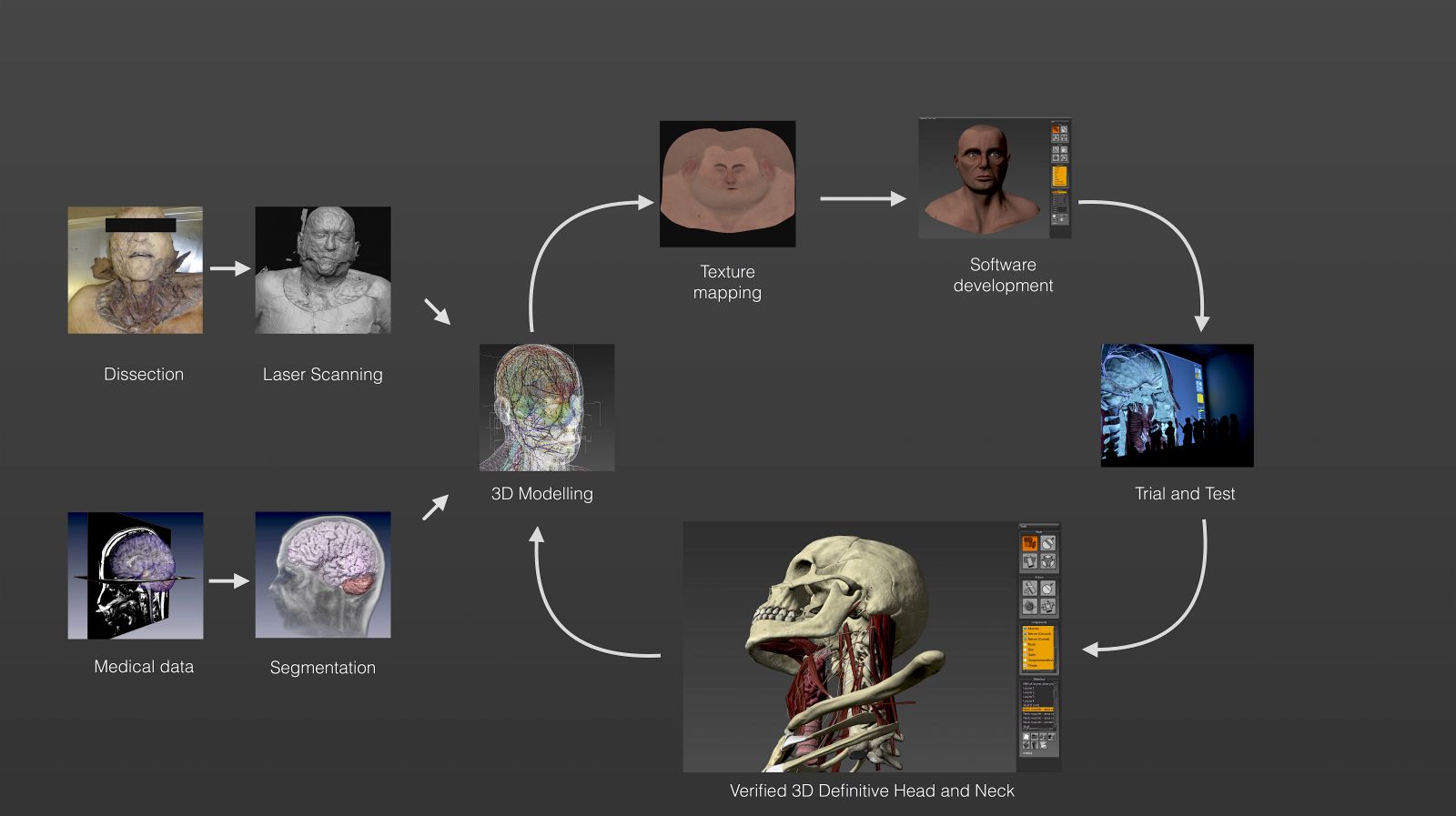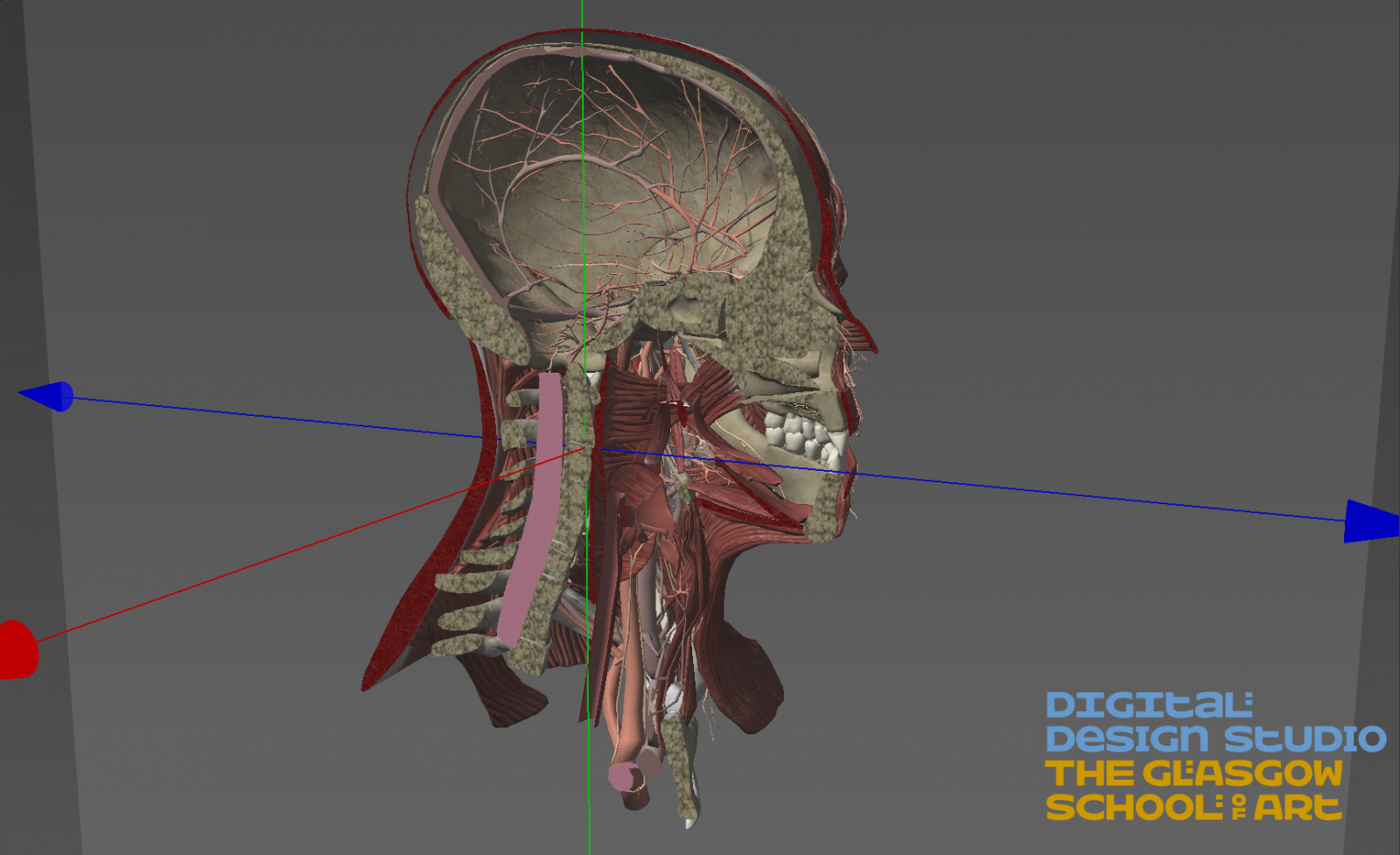
| Theme: 5BB Team Based Learning/Learning anatomy | |||
 |
||||||
| 3D Head and Neck project: Development of a novel visualisation tool for education, training and research in human anatomy. | ||||||
|
||||||
The 3D digital head and neck is constructed from sources including anatomical data acquired from 3D laser scans and radiography of human cadavers. This data is then integrated within a bespoke visualization platform to create a high quality real-time interactive 3D digital model. Furthermore, haptic force feedback interaction is added for dental training purposes.

The 3D medically verified head and neck model is the first highly detailed 3D stereoscopic model of human body. This model aims to improve knowledge and skills among medical professionals through real-time interaction of realistic data sets. Thereby it seeks to increase the efficiency and productivity in healthcare and to enable remote learning. The simulation of dental injection allows students to simultaneously learn the anesthetic technique and its relevant anatomy. Further integration with haptic force feedback enables students to touch and feel the oral tissues while practicing anesthetic techniques in a safe and repeatable environment.
We gratefully acknowledge funding support from the Scottish Funding Council/NES (PA), the US-UK Fulbright Commission (AL), authoring support from Brian McGeough, scientific expertise from Dr. Paul Rea, Dr. Anna Lyskowski and computer graphic expertise from Ibrahim Buksh, Victor Portela, James Simpson and Stefania Calderara.
 The sound understanding of human anatomy is vital for students pursuing medical, dental and paramedical careers. However, restricted availability of cadaveric dissection sessions and the lack of accurate anatomic models of the human body have posed problems in medical education over the last decade. The 3D Definitive Head and Neck project, a pioneering collaborative project between Digital Design Studio, University of Glasgow and NHS Education for Scotland has addressed this problem by providing highly detailed interactive 3D anatomic visualizations.
The sound understanding of human anatomy is vital for students pursuing medical, dental and paramedical careers. However, restricted availability of cadaveric dissection sessions and the lack of accurate anatomic models of the human body have posed problems in medical education over the last decade. The 3D Definitive Head and Neck project, a pioneering collaborative project between Digital Design Studio, University of Glasgow and NHS Education for Scotland has addressed this problem by providing highly detailed interactive 3D anatomic visualizations.
The 3D Definitive Human allows students and teachers to learn the anatomy by interacting with the fully labeled model in a real-time 3D environment and by performing virtual dissections layer by layer.
A user can learn about individual structures in great detail by interacting with them in 360 degrees. By turning superficial structures transparent, the deeper layers can be explored for a better understanding. The spatial distribution of various structures can be studied with the help of the bespoke explore tool. Integrating this with MRI/CT Scan data helps students to correlate with the radiographic anatomy.
High-resolution data capture and accurate modeling supported by specialist clinical inputs makes the 3D head and neck a highly reliable resource to support anatomic learning, by allowing intuitive and self-paced exploration with a level of details never possible before. Real-time interactivity and haptic force feedback provide increased scope for training and research.



 Send Email
Send Email